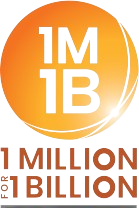[SINGAPORE] Core and headline inflation slowed in July, contrary to economists’ expectations that both would hold steady at their June rates.
The Monetary Authority of Singapore (MAS) and the Ministry of Trade and Industry (MTI) maintained their forecasts but noted that the outlook remains uncertain.
Core inflation, which excludes accommodation and private transport, eased marginally to 0.5 per cent in July. This was driven by falling prices of retail and other goods, as well as electricity and gas, said the Singapore Department of Statistics on Monday (Aug 25).
Private-sector economists had expected it to hold steady at June’s 0.6 per cent rate, according to a Bloomberg poll.
Headline inflation also slowed to 0.6 per cent, down from 0.8 per cent in June, where economists had forecast it would stay.
On a month-on-month basis, the core consumer price index (CPI) fell 0.1 per cent, while the all-items CPI fell 0.4 per cent.
BT in your inbox
Start and end each day with the latest news stories and analyses delivered straight to your inbox.
MTI and MAS kept their 2025 full-year core forecast range at 0.5 to 1.5 per cent for both core and headline inflation, but added: “The inflation outlook in the quarters ahead is subject to both upside and downside risks.”
Inflation could come in higher than expected if geopolitical shocks cause an abrupt rise in imported energy and shipping costs, they said.
“Conversely, should global and domestic growth be more hesitant and weaker than anticipated, core inflation could stay low for longer.”
In its Jul 30 decision, MAS had kept policy settings unchanged, after two consecutive easings in January and April.
In the near term, Singapore’s imported inflation “should remain moderate” as global oil prices continue to ease and food commodity price increases are expected to stay contained, said MTI and MAS.
Ongoing trade conflicts could be inflationary for some countries, but the impact on Singapore’s import prices is likely to be offset by the disinflationary effect of weaker demand, they added.
At home, unit labour costs should moderate due to slower nominal wage growth and rising labour productivity. Higher government subsidies for essential services will also continue to dampen services inflation.
Key CPI categories
In July, most CPI categories experienced lower inflation or outright declines in prices.
The prices of retail and other goods fell by 0.5 per cent, after having held steady in June, due to a drop in the prices of clothing, footwear and household appliances.
Electricity and gas prices fell by 5.6 per cent, deepening from a fall of 3.9 per cent in June, due to a larger decline in electricity prices.
Accommodation inflation eased to 0.5 per cent, from 1 per cent in June, as a result of smaller increases in housing rents and maintenance and repair costs.
Services inflation was unchanged at 0.7 per cent, as the fall in the cost of social services and steeper decline in outpatient care services prices were offset by a smaller decrease in holiday expenses.
But inflation rose marginally for two categories. Food inflation edged up to 1.1 per cent, from 1 per cent before, as the prices of food services and non-cooked food rose at a quicker pace.
Private transport inflation ticked up to 2.1 per cent, from 2 per cent, due to a steeper rise in car prices.




